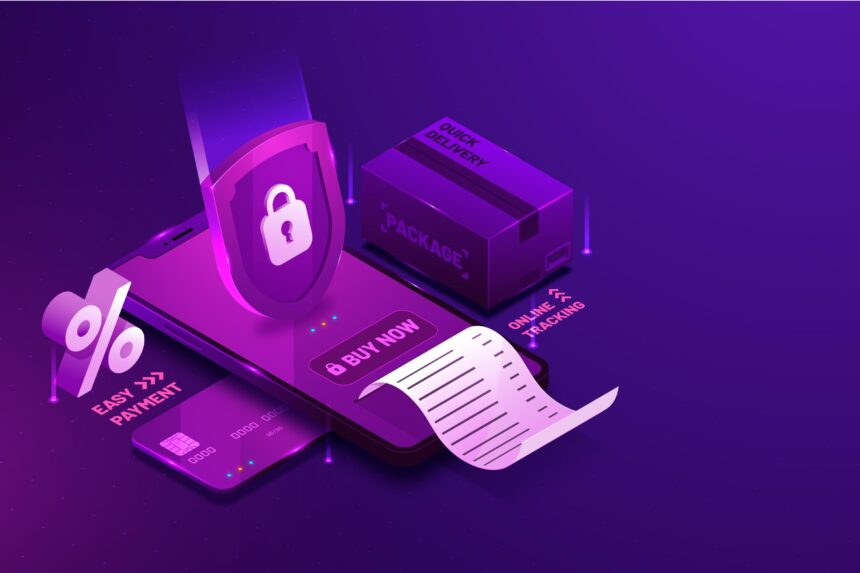Introduction
Online banking has revolutionized the way people manage their finances, offering unmatched convenience and accessibility. With just a few taps on a smartphone or clicks on a computer, users can transfer funds, pay bills, check balances, and even invest—all without stepping into a bank branch. However, this ease of access comes with risks, as cybercriminals are constantly devising new ways to exploit security vulnerabilities and steal personal and financial information.
Cyber threats such as phishing scams, malware, and hacking attempts pose significant risks to online banking users. If not properly protected, sensitive banking details could fall into the wrong hands, leading to financial losses and identity theft.
To safeguard your banking information, it’s essential to follow best security practices. In this guide, we will explore common online banking threats and practical steps to ensure a secure digital banking experience.
Understanding Online Banking Threats
Cybercriminals use various tactics to target online banking users. Being aware of these threats is the first step in protecting yourself from fraud and identity theft.
1. Phishing Attacks
Phishing is one of the most common online banking threats. Cybercriminals send fraudulent emails, text messages, or social media links that appear to be from legitimate banks. These messages often urge users to click on a link and enter their login credentials, allowing attackers to steal their information.
- Example: A fake email from your bank claims your account has been locked and asks you to “verify” your identity by entering your username and password on a fake website.
How to prevent phishing attacks:
– Never click on links from unknown or suspicious emails.
– Verify the sender’s email address and look for misspellings or unusual domains.
– Contact your bank directly if you receive an unexpected request for personal information.
2. Malware and Keyloggers
Malicious software (malware) can be unknowingly installed on your device, allowing hackers to record keystrokes (keyloggers) and capture your banking credentials. Malware is often spread through infected email attachments, fake apps, or unsecured websites.
How to protect against malware:
– Keep your antivirus software updated and run regular scans.
– Avoid downloading attachments or clicking on links from unknown sources.
– Install only verified banking apps from official app stores.
3. Man-in-the-Middle (MITM) Attacks
In a MITM attack, hackers intercept communication between you and your bank, capturing sensitive information in real time. This can happen on unsecured Wi-Fi networks or if your device has been compromised.
How to prevent MITM attacks:
– Avoid using public Wi-Fi for online banking.
– Use a Virtual Private Network (VPN) to encrypt your internet connection.
– Always check for “https://” in the URL when accessing your bank’s website.
4. Data Breaches
Hackers may exploit weak security measures in banking systems to gain access to customer data, potentially exposing login credentials, account numbers, and personal information.
How to reduce the risk of data breaches:
– Regularly monitor your accounts for suspicious activity.
– Change passwords frequently and avoid using the same password for multiple accounts.
– Enable additional security features, such as biometric authentication.
Best Security Practices for Safe Online Banking
Now that you’re aware of potential threats, let’s explore how to secure your online banking experience.
1. Use Strong and Unique Passwords
A weak password is like an open door for hackers. Creating a strong, unique password is one of the easiest yet most effective ways to secure your banking account.
Tips for creating strong passwords:
– Use at least 12-16 characters with a mix of uppercase and lowercase letters, numbers, and special symbols.
– Avoid using easily guessable information like birthdays, names, or common words.
– Never reuse passwords across multiple accounts.
– Consider using a password manager to generate and store complex passwords securely.
2. Enable Two-Factor Authentication (2FA)
Two-Factor Authentication (2FA) adds an extra layer of security by requiring a second form of verification in addition to your password. This could be:
– A one-time code sent via SMS or email.
– A biometric scan (fingerprint or facial recognition).
– An authentication app like Google Authenticator or Microsoft Authenticator.
Enabling 2FA makes it significantly harder for cybercriminals to access your account, even if they steal your password.
3. Be Cautious of Phishing Scams
Phishing remains a top cybersecurity threat. To avoid falling victim:
– Never click on links in unsolicited emails or text messages claiming to be from your bank.
– Always verify URLs before entering your credentials.
– Contact your bank directly if you receive a suspicious request for personal information.
4. Always Use Secure Internet Connections
Online banking should never be done on public Wi-Fi networks (e.g., in coffee shops or airports), as these networks are often unsecured and prone to hacking attempts.
To stay secure:
– Use a VPN to encrypt your connection.
– Stick to your mobile data or a trusted, secure Wi-Fi network.
5. Keep Your Devices and Software Updated
Outdated software often has security vulnerabilities that hackers can exploit.
– Enable automatic updates for your operating system, browsers, and banking apps.
– Update your antivirus software regularly.
– Remove old, unused apps to minimize security risks.
6. Monitor Your Bank Statements Regularly
Regularly reviewing your bank transactions can help you detect suspicious activity early.
– Set up real-time alerts for transactions.
– Report unauthorized transactions to your bank immediately.
-Keep track of your spending patterns to spot inconsistencies.
7. Use Only Official Banking Apps and Websites
Cybercriminals often create fake banking apps and websites to steal login credentials.
– Only download banking apps from official app stores (Google Play Store or Apple App Store).
– Verify app legitimacy by checking ratings and reviews.
– Ensure that banking websites have “https://” in the URL and a padlock icon in the address bar.
8. Beware of Social Engineering Attacks
Hackers often manipulate people into revealing confidential information by posing as bank representatives.
– Never share your PIN, password, or security codes over the phone.
– Verify callers by contacting your bank’s official customer service number.
– Avoid oversharing personal details on social media, as attackers can use them to gain your trust.
9. Secure Your Devices with Antivirus and Firewall Protection
– Install trusted antivirus software and keep it updated.
– Enable firewalls to block unauthorized access.
– Avoid downloading software from unverified sources.
10. Always Log Out After Banking Sessions
– Log out after every banking session, especially on shared or public devices.
– Avoid saving banking login details in browsers—use a password manager instead.
What to Do If You Suspect Fraud
If you notice any unusual activity in your bank account:
– Contact your bank immediately to report fraudulent transactions.
– Change your banking passwords and security questions.
– Monitor your account for further suspicious activity.
Your bank can guide you on additional steps to secure your account and recover lost funds.
Final thoughts
Online banking security is more important than ever. By following these best practices—using strong passwords, enabling 2FA, avoiding phishing scams, and monitoring your accounts—you can significantly reduce the risk of fraud.
Staying proactive and vigilant will help ensure a safe and secure online banking experience. Protect your financial future by implementing these security measures today!
FAQs
1. How do I know if my online banking account has been hacked?
Look for unauthorized transactions, login attempts, or account changes.
2. Is mobile banking safer than online banking on a computer?
Both can be safe if you use 2FA, strong passwords, and secure networks.
3. What should I do if I receive a suspicious email from my bank?
Do not click on any links. Contact your bank directly to verify authenticity.
4. How often should I change my online banking password?
Every three to six months for added security.
5. Are banking apps safer than using a web browser for online banking?
Yes, official banking apps offer built-in security features that browsers may not have.






